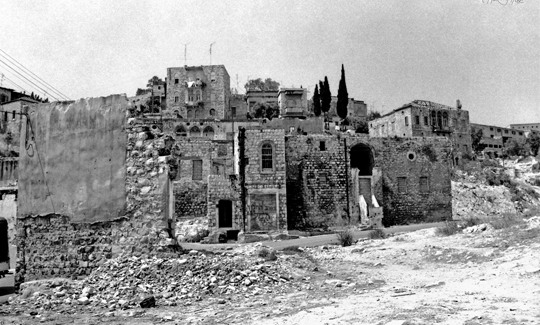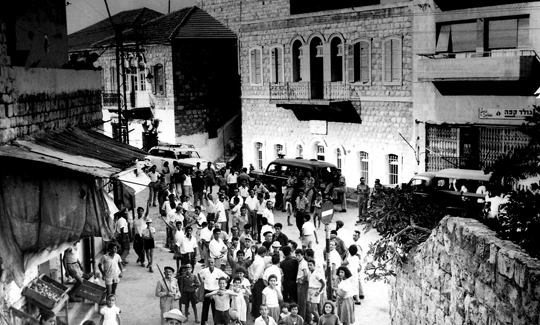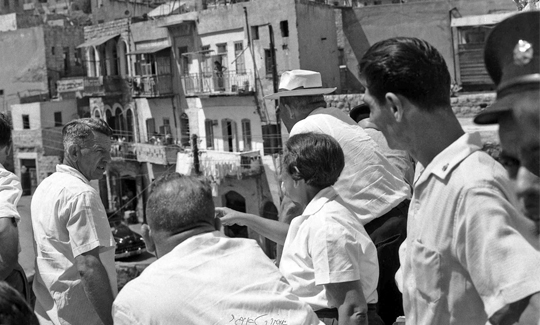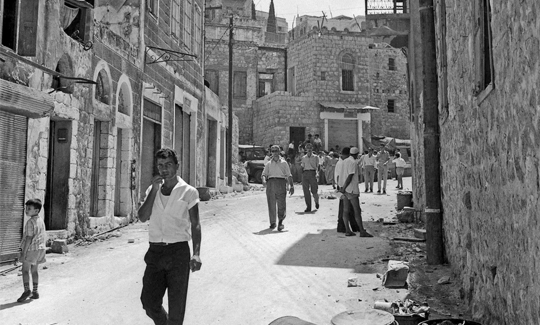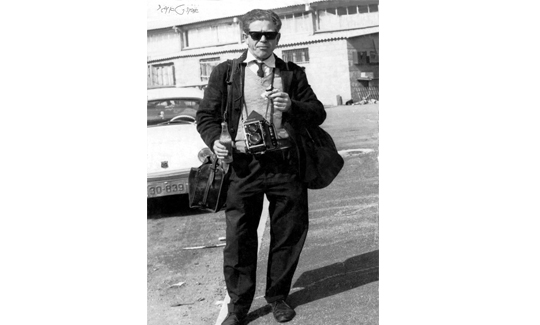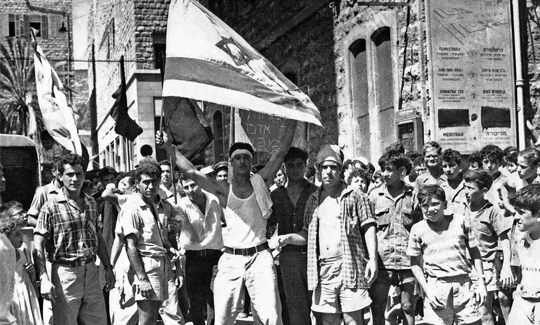In the 1950s, a number of professional photographers were active in Haifa. Some worked for local institutions and government bodies. Amiram Erev (the “Solel Boneh Photography Studio”) and Moshe Gross (the “Keren Or” studio), for example, documented the period’s bustling industries and massive surge of construction. Alongside Arav and Gross, photographers passing through the city — such as Boris Carmi and Zoltan Kruger — commemorated its unique views. These years also saw the emergence of a new kind of critical documentary photography, which focused on socio-political issues that had previously been far from the public eye discourse. These photographs also appeared in the press. The most prominent photographer in the journalistic-documentary style was Oskar Tauber, who for decades produced photo-journalistic investigative reports documenting the Israeli public, particularly the citizens of Haifa. As one of the senior press photographers in the country at the time, Tauber felt it was his role to publicize events that occurred in the city. He thus left his mark through his works, which were published in Israel and abroad.
Tauber was born in 1909 in the town of Križevci, Croatia. At a young age he joined the Maccabi Zagreb Association, becoming a well-known athlete. He studied languages and trade at institutions of higher education in Croatia and Switzerland. At the same time he began to study photography and photographic processing. He worked as a translator and stenographer in five languages: Croatian, German, Italian, French, and English.
During World War II, on 22 April 1941, Tauber was arrested by the Gestapo. Four months later he was released through the efforts of his friend Lenka-Leah Pinzi, and the two escaped to Slovenia, where they married. They then fled to the Italian mountains and joined the partisans. Here Tauber served as a go-between, maintaining contact with the Allied forces on parachuting operations of soldiers and equipment. In April 1945 Oskar and Leah arrived in Palestine, where they were detained by the British at the Atlit detainment camp for illegal immigrants. They were released following the intervention of Oskar’s brother, Robert, who was the representative of the Kodak Company in the Middle East. After their release the couple moved to Pardes Hanna, where Tauber began to photograph British military camps. He was recruited by Hagana forces to serve in military outposts in the area Ein Shemer, a kibbutz.
Tauber took part in military operations and documented them with his camera, and also developed aerial photographs at the Hagana headquarters in Jaffa.
In 1948 he arrived in Haifa with his wife and two-year-old son Joseph, and began to work as a studio photographer. Among other things, he photographed portraits and family gatherings. His two-room apartment on 27 Moriyah Street served as the family’s home, a studio, and a darkroom for processing photographs. In early 1950, the year his daughter Dalia was born, he began to work as an official press photographer for HaOlam HaZe, the journal LaIsha, the U.P. and A.P. foreign press agencies, and as a freelance photographer for the national and local newspapers.
Mostly, Tauber was a press photographer, covering all current events, particularly in Haifa and the north of Israel, though he also traveled to Gaza, Hebron, Ismailia, and Suez during the War of Attrition in the Sinai Desert. His work included social and political photo-journalistic essays, alongside commissions from institutions, symbolic political events, and various special events at all of Haifa’s institutions and in all fields — academia, sports, politics, cinema, seamanship, and the city’s social and cultural life.
His photographs include portraits of famous public figures, Haifa's mayors, government officials, and film stars. He documented sporting events, theatrical productions, immigrant camps in and around Haifa, demonstrations and political speeches, events such as the capture of the HMS Mendip (L60) — an Egyptian destroyer, the visit of Egyptian President Anwar Sadat, the opening of the Carmelit funicular railway in the presence of Prime Minister David Ben-Gurion, filming of Exodus, as well as official events at Haifa Port, at the Dagon Silos, at the Technion, and at Haifa University.
One of the major events he documented was the wave of riots in Wadi Salib. He photographed the 1959 demonstrations in the streets of Haifa at close range, as well as the story’s developments in the courts, in prison, and in the investigative commission. His exclusive photographs featured in the pages of HaOlam HaZe and in Israeli newspapers. These works are presented in the exhibition, telling the story of Wadi Salib in an authentic and straightforward way.
At the age of 83 Tauber moved to the old folks’ home in the city, but continued to take photographs. He died in 2000, leaving behind thousands of rolls of film depicting the growth of the State of Israel in black-and-white and in color.

